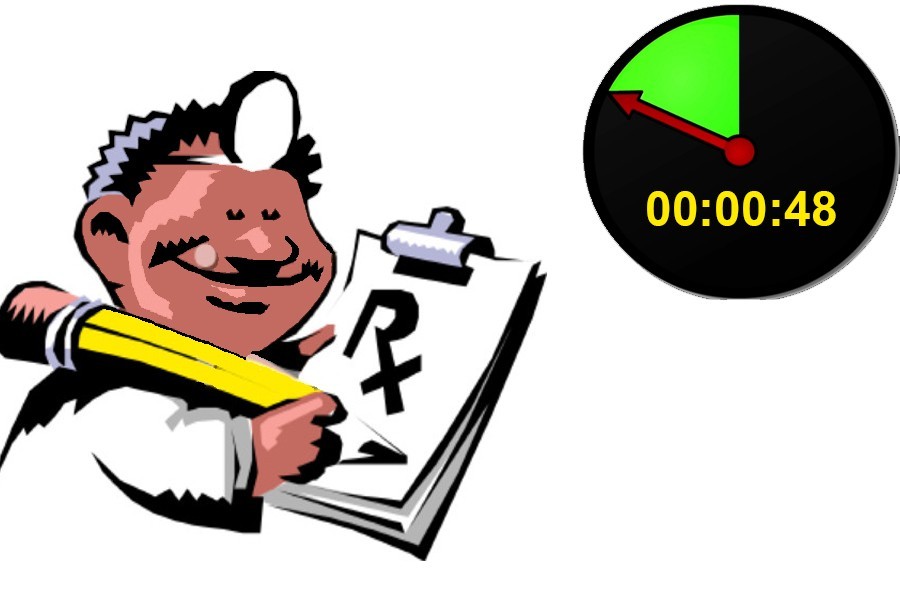It is nothing surprising that physicians in Bangladesh, on an average, spend only 48 seconds on each of their patients who seek primary healthcare. The allotted time is one of the lowest in the world, the British Medical Journal (BMJ) said quoting a study.
The finding does, actually, highlight one pitiable aspect of the state-sponsored primary healthcare in Bangladesh, a country that has graduated to lower middle-income country status and aspires to achieve the middle-income country status (MIC) soon.
In fact, the patients who get attention of the physicians for a very short period at the primary healthcare centres consider themselves rather lucky, for a large number of people in rural areas are deprived of even that scanty service. Many patients visiting the government health complexes at the upazila (the lowest administrative tier) return home disappointed as doctors do very often skip their duties and prefer to stay in Dhaka or some other places of their choice.
The truth is that the country's primary healthcare service has weaknesses beyond the less attention given to patients by the physicians involved with it. The situation prevailing in the primary healthcare centres in major urban areas despite having lots of deficiencies is considered more or less acceptable. But it is really highly unsatisfactory in the rural health centres.
Every year, government and private medical colleges -- the second category has mushroomed in recent years --churn out a large number of medical graduates who desperately try to grab government jobs. The government does also recruit a good number of them every year. But the problem arises when they are appointed to rural health centres that do not have sufficient number of doctors. The fresh medical graduates are more interested in securing government jobs but not willing to serve in the rural areas where all the modern amenities of urban life are not available.
Beside highly insufficient attention from the physicians, patients visiting the rural health centres do very often suffer due to non-availability of necessary diagnostic and treatment facilities. X-ray machines and ambulances of a large number of upazila health complexes remain out of order most of the times for lack of maintenance and poor patients are forced to take the services of private diagnostic centres and ambulance operators. Allegations have it that medical equipment and ambulances are kept inoperative deliberately in exchange for commissions from the private parties.
The BMJ survey has found a significant link between physicians' consultation length and per capita spending on health in various countries, meaning that less per capita spending has a bearing on the physicians' consultation time.
There is no denying that per capita government spending on health in Bangladesh is one of the lowest in the world and a highly inadequate budgetary allocation has been forcing the people to meet a large part--more than 60 per cent -- of the medical expenses out of their own pockets. This is considered a big burden on poor and low-income families.
Doctors in the countries where governments meet most part of medical expenses of their citizens pay greater attention to patients. In Sweden, doctors at the primary healthcare centres, spend, on an average, 22.5 minutes on each patient. The time given in the USA is 21 minutes and Norway 20 minutes. Even in neighbouring India, doctors spend 2.0 minutes on each patient.
The quality and quantity of government spending are important factors in the health sector, no doubt. But as far as attention given to patients is concerned, doctors' attitude is no less important.
For instance, a doctor while attending patients at a government hospital is always found to be in a hurry. He or she does not have time to listen to the patients there. But the same doctor at his/her private consultation chamber does allocate sufficient time to patients. It is money that makes all the changes in attitude and mental makeup!
It is no denying that doctors have to attend a large number of patients at the government health facilities. So, they have to divide their time. But that is not always true. Junior doctors, instead of attending patients, are found gossiping or doing many other unnecessary things. The seniors do very often skip duty at their workplaces and attend patients or engage in surgeries in private health facilities that offer them attractive financial benefits.
So, barring per capita government expenditure and other deficiencies of primary healthcare centres, doctors' lack of sympathy towards patients remains a major problem in improving the primary health services in Bangladesh. Medication is essential for treating patients, but care and sympathy are two other important factors that can largely alleviate their pains and sufferings. Physicians here are aware of this fact, yet they are not serious about it. But they should be for their great profession's sake.


